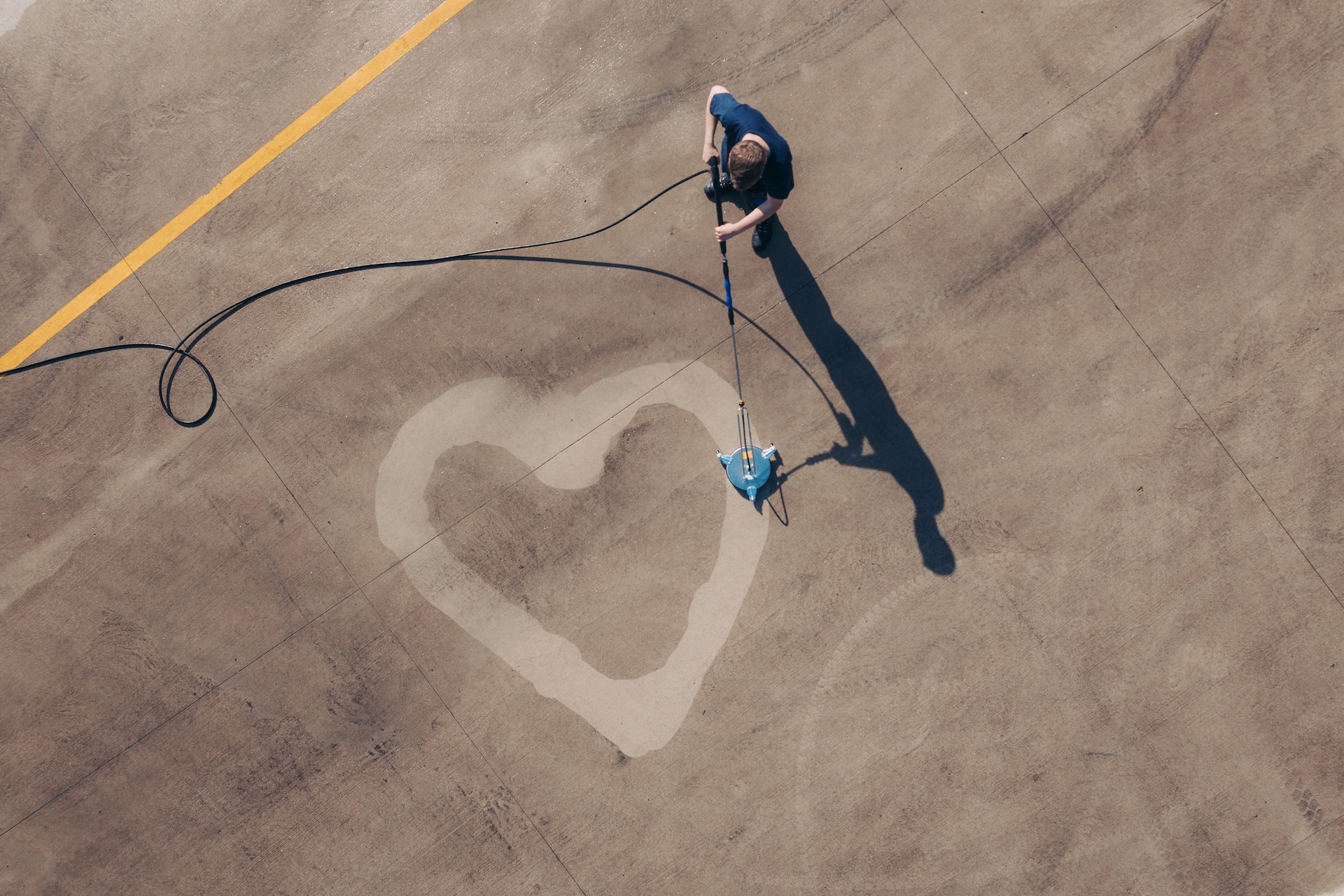

A high-pressure washer is a powerful tool for outdoor cleaning. However, when it comes to large, even surfaces, the standard pinpoint nozzle quickly reaches its limits. This is where rotating surface and floor cleaners for high-pressure washers come into play. They make cleaning significantly more efficient and gentle on materials – delivering uniform results in less time and with less effort.
Inside the surface cleaner, one or two nozzles rotate around their axis. Thanks to the constant distance to the surface, they achieve uniform cleaning performance without the need to go over the same area multiple times.
The closed housing design of most models largely prevents uncontrolled splashing of water and dirt – a major advantage when cleaning in residential areas or near sensitive surroundings.
Because the distance to the surface remains consistent, delicate materials such as wood, tiles, or colored paving stones are protected. Many models also offer adjustable pressure or interchangeable nozzles to adapt the device to different materials.
As a rule of thumb: allow for 2.5–3 cm of working width per liter of water flow per minute. For example, a 30 cm cleaner requires about 10–12 l/min. If less water is available, reduce the width or work more slowly.
For removing oil, grease, and algae, stainless steel or aluminum models are recommended, as they can withstand high temperatures – particularly important for industrial or continuous use.
A durable swivel joint is key for consistent rotation and long service life. The right nozzle type and, if needed, a pressure regulator also contribute to optimal cleaning performance.
Not every model is suitable for all surfaces. Those cleaning various materials should choose a versatile unit with pressure regulation.
Models with double nozzles, suction functions, or adjustable-height wheels offer added performance and flexibility.
High-quality materials, replaceable nozzles, and easily accessible swivels increase longevity and simplify maintenance.
Rotating surface and floor cleaners for high-pressure washers are the perfect addition for anyone who regularly cleans large areas – whether in private or commercial use. They save time, protect materials, deliver uniform results, and make cleaning more comfortable. By selecting a model that matches your washer’s capacity, both efficiency and cleaning quality can be significantly improved.
1. What working width is ideal for my high-pressure washer?
Follow the rule of thumb: 2.5–3 cm working width per liter of water flow. For example, 30 cm = 10–12 l/min.
2. Which is better – a surface cleaner with or without wheels?
Use wheel models for large, open surfaces and floating models for tight or angled areas.
3. Can I use hot water?
Yes – professional metal models are designed for hot water and are especially effective against grease and mold.
4. What should I look for when buying one?
Pay attention to swivel joint quality, pump compatibility, working width, and optional pressure control.
5. Can I clean vertical surfaces too?
Yes, with a telescopic lance and appropriate guide handle, even facades can be cleaned efficiently.
6. How can I prevent streaking?
Use the correct pressure and ensure your washer provides sufficient water flow – if not, work more slowly for even results.
ChatGPT kann Fehler machen. Überprüfe wichtige Informationen. Sie